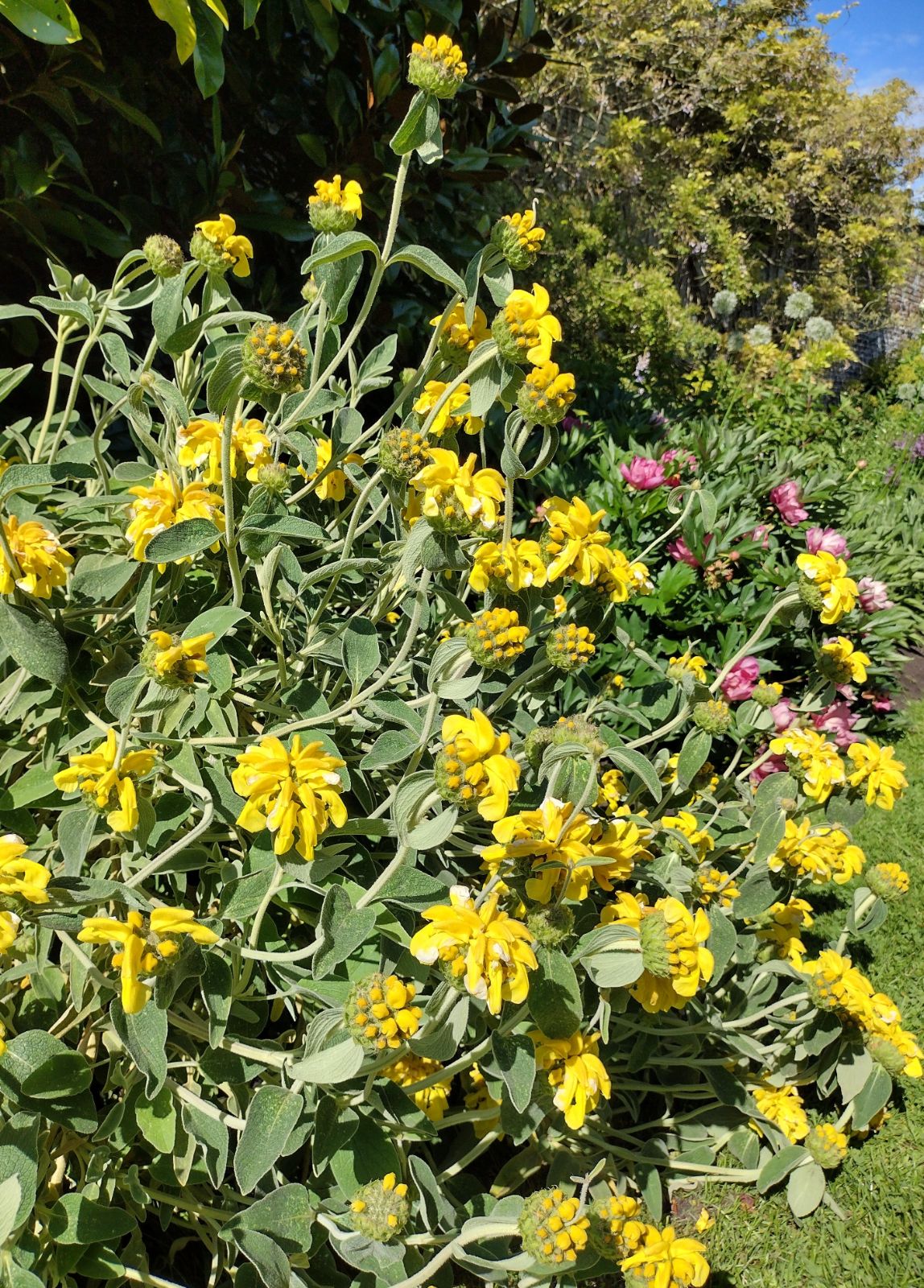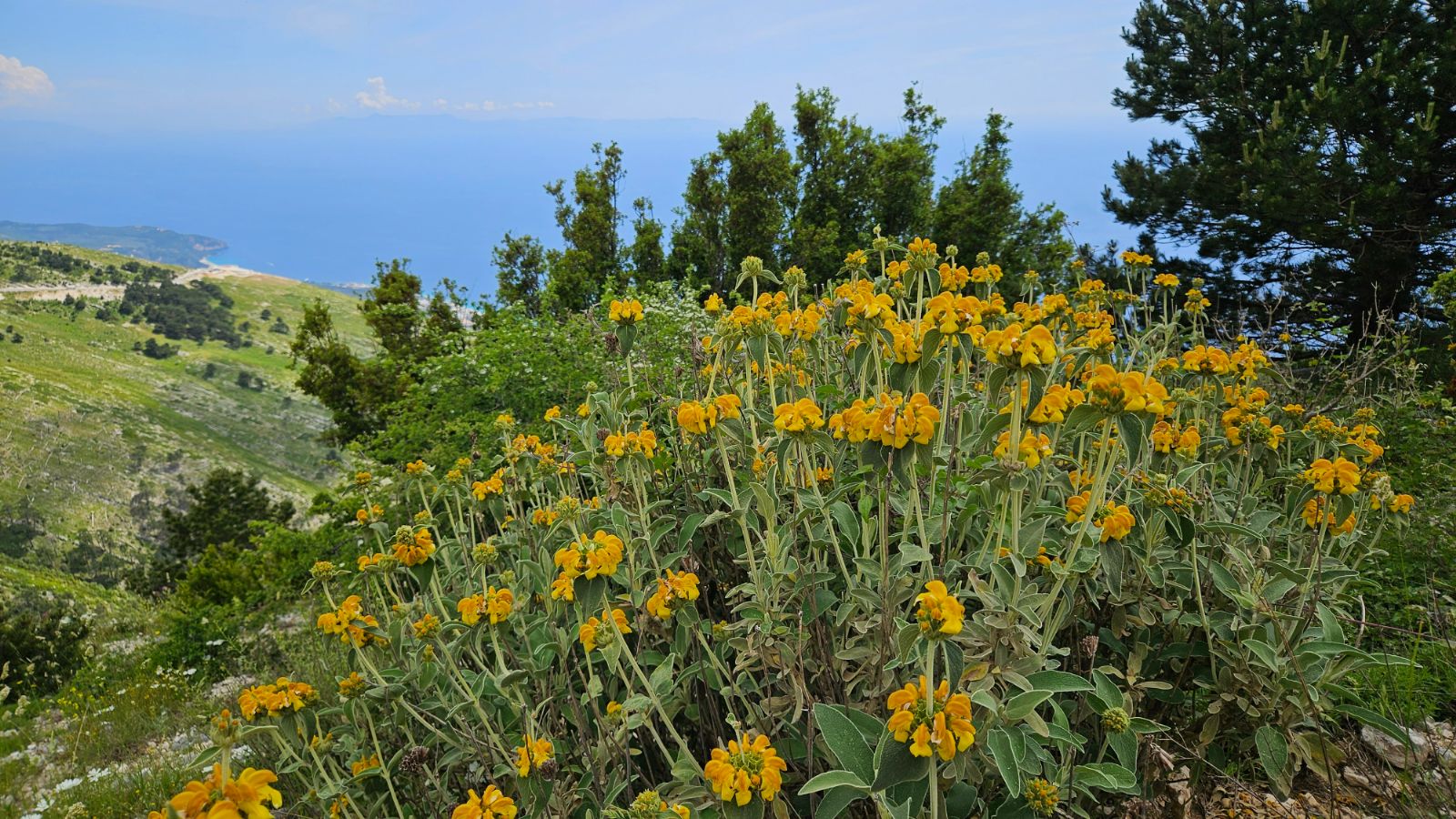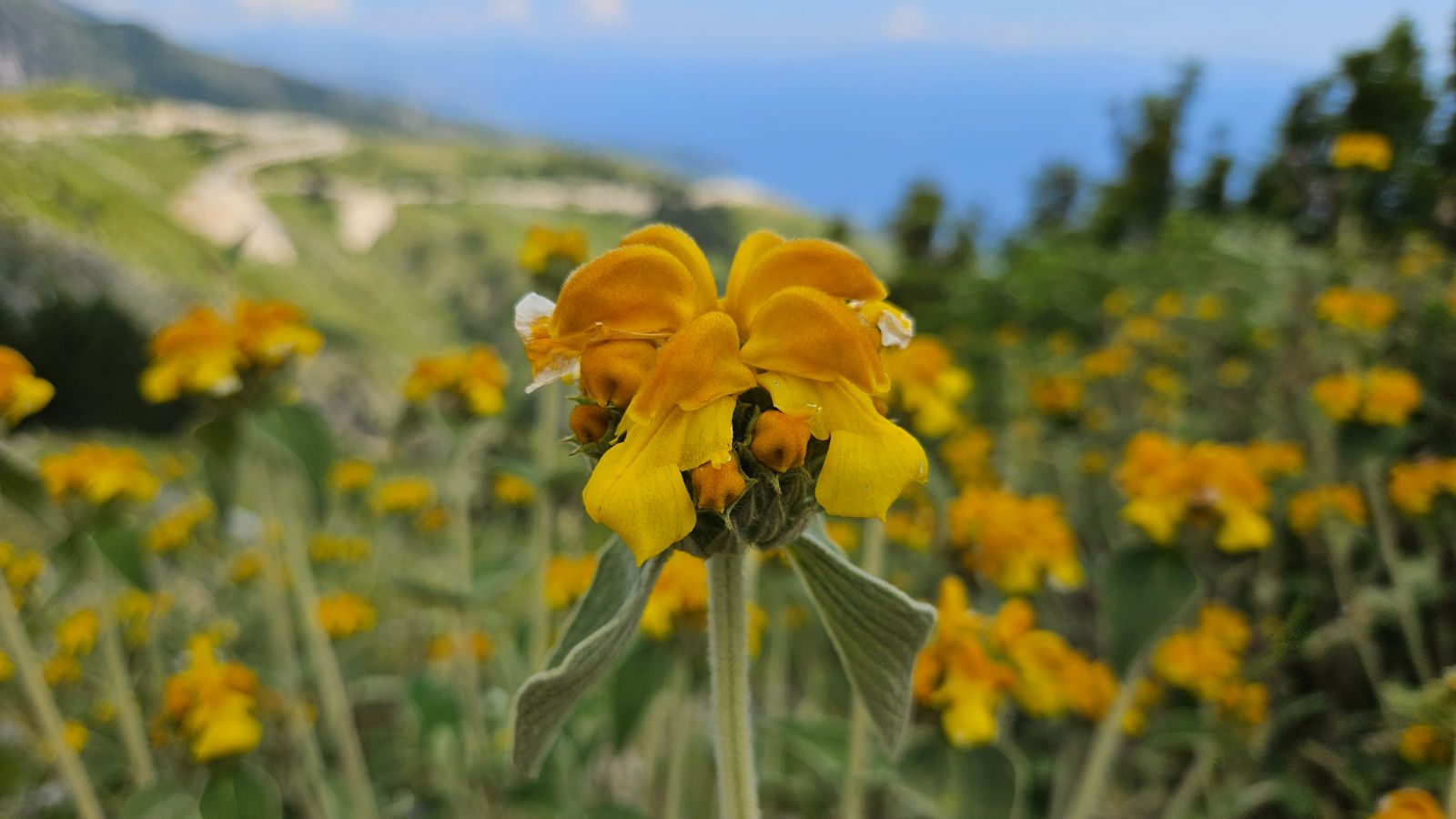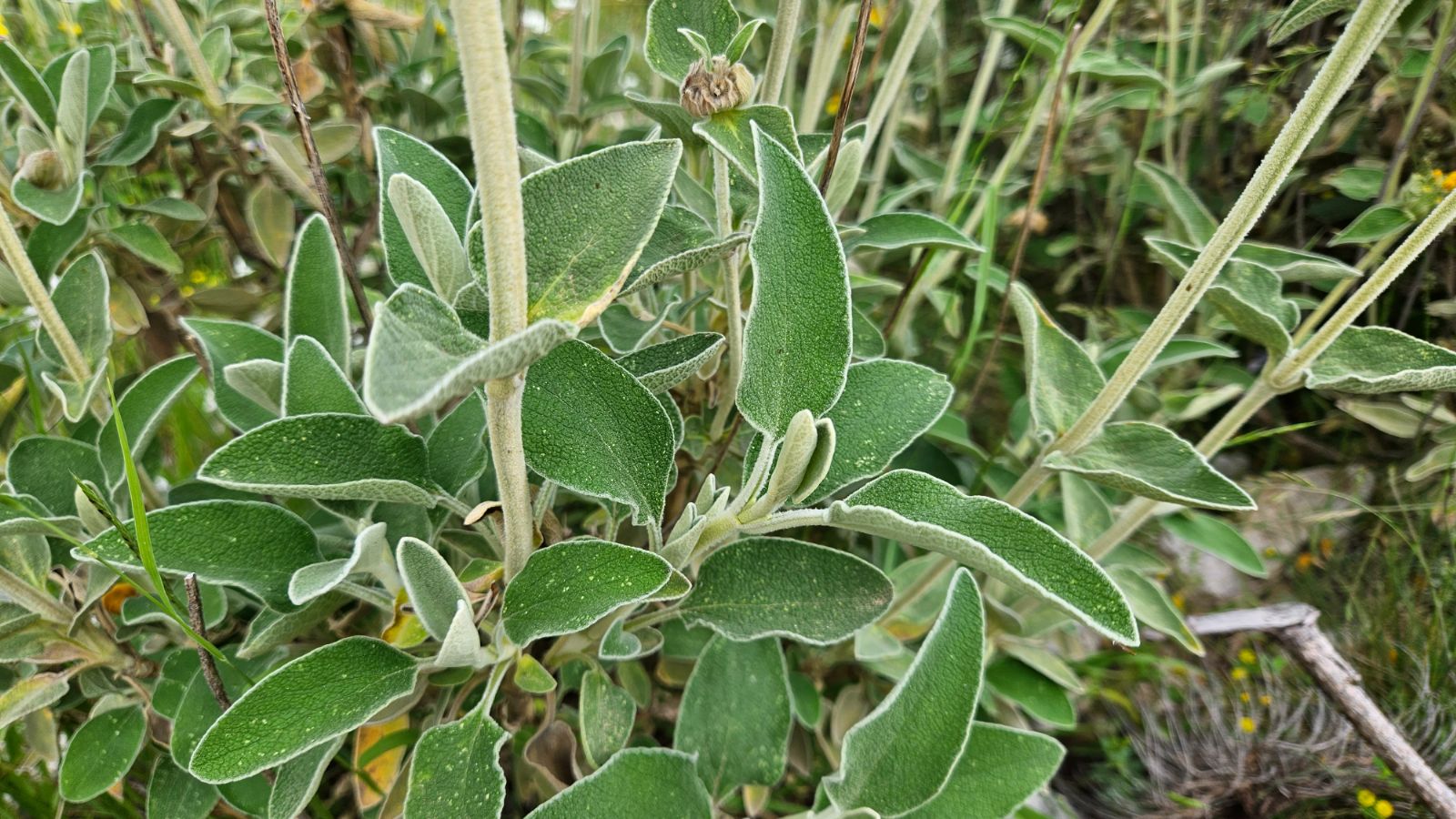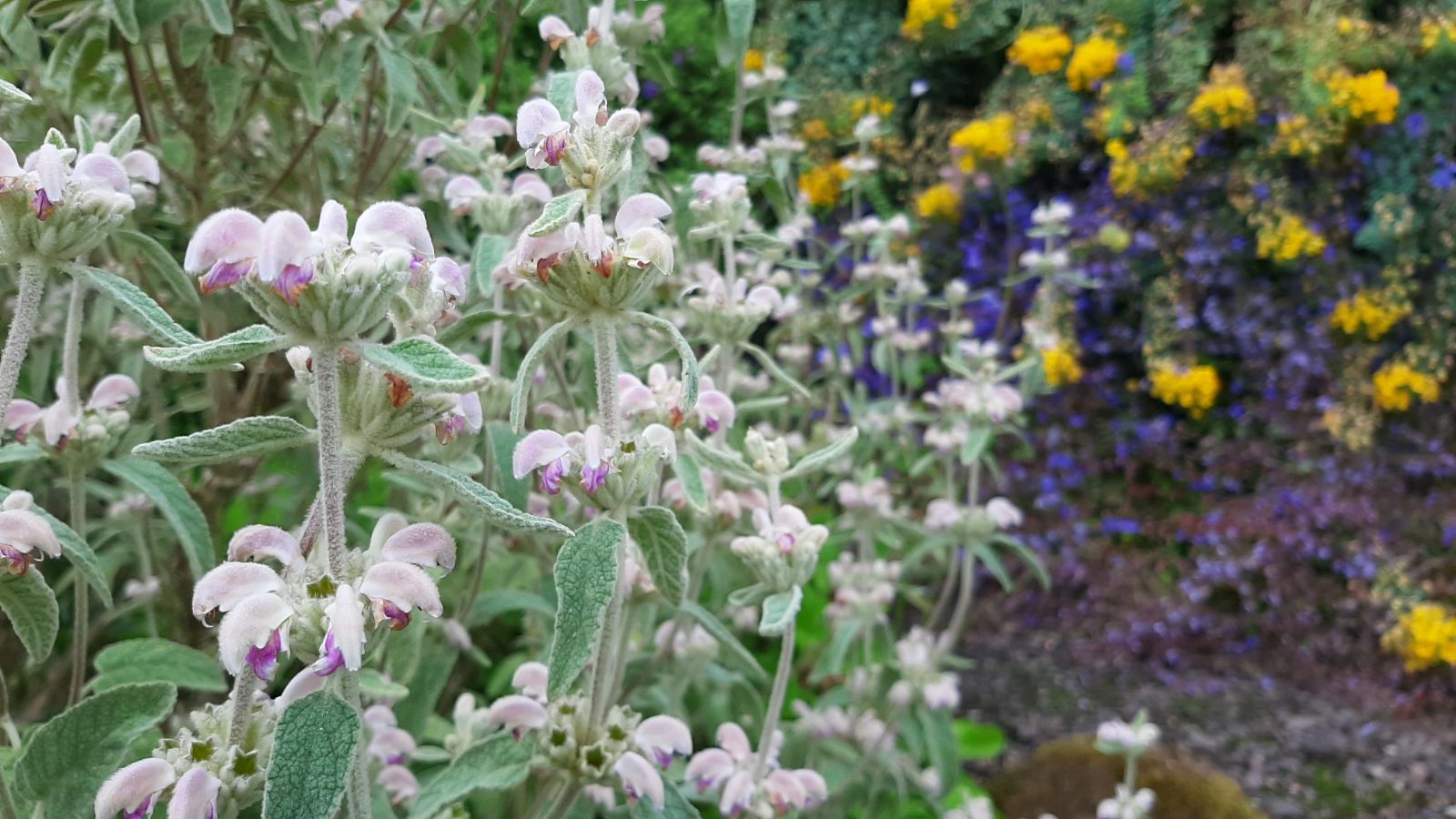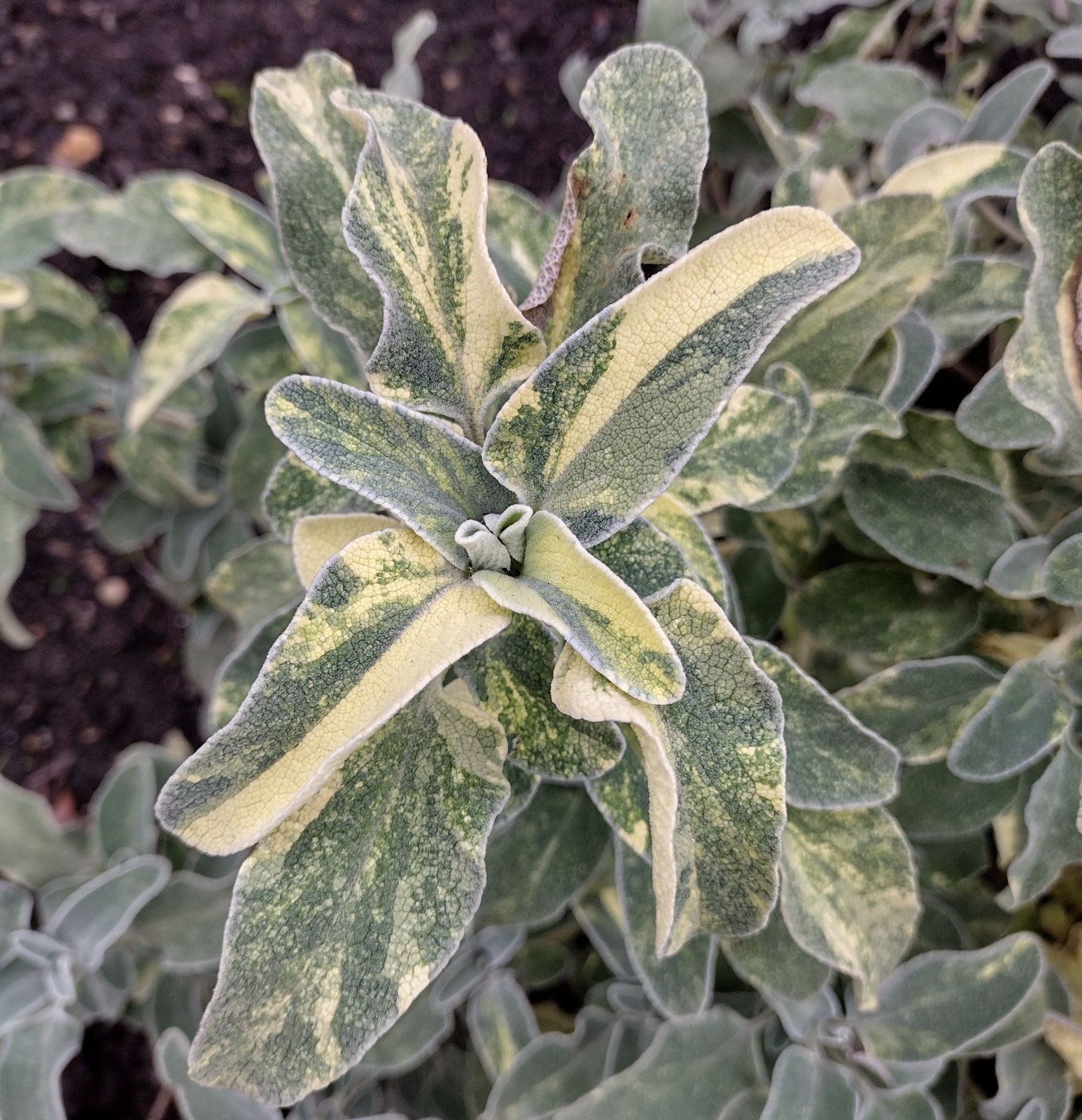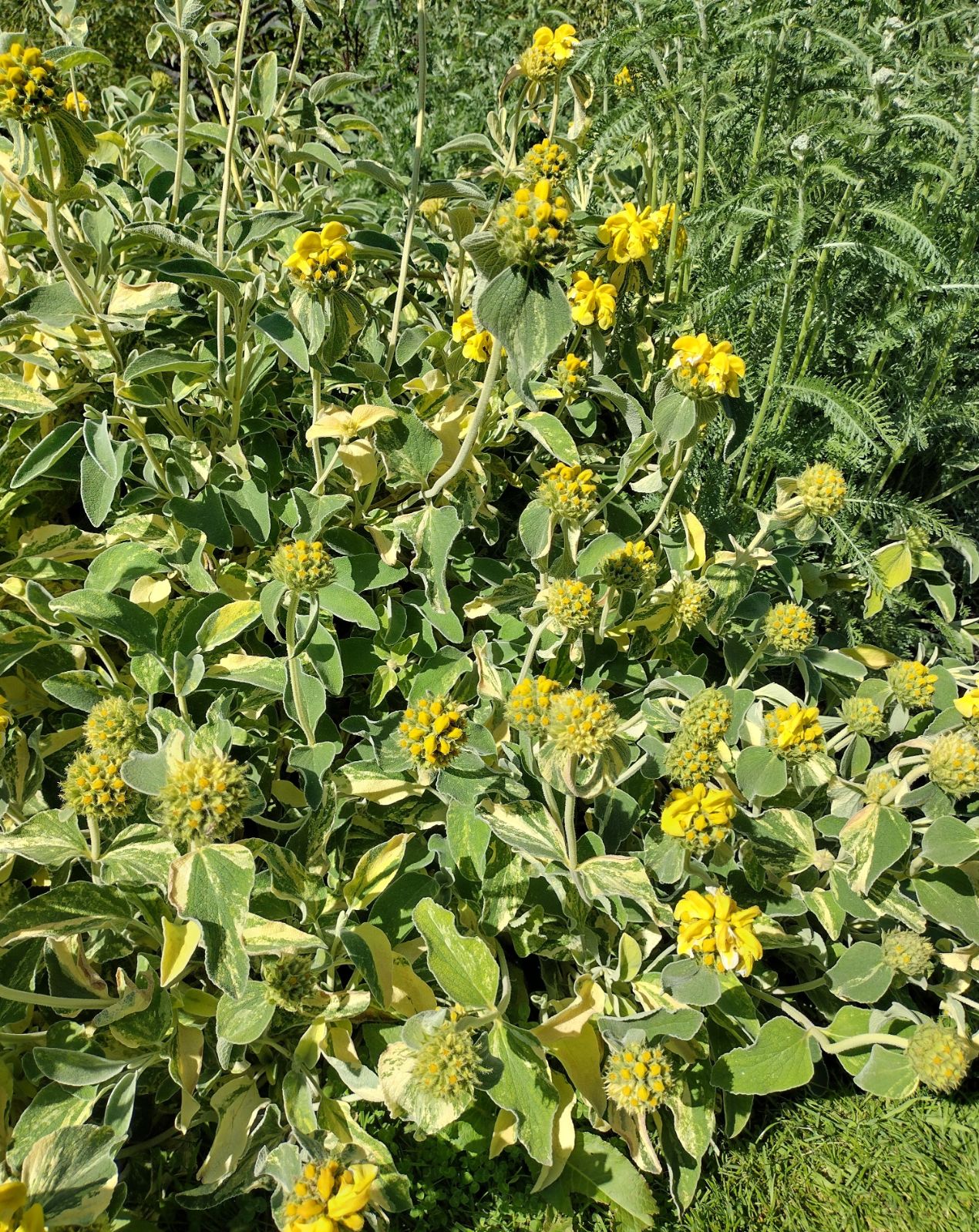Phlomis fruticosa
Credits
Article from Bean's Trees and Shrubs Hardy in the British Isles
Recommended citation
'Phlomis fruticosa' from the website Trees and Shrubs Online (treesandshrubsonline.
Genus
Common Names
- Jerusalem Sage
Infraspecifics
Other taxa in genus
A vigorous evergreen shrub; branchlets soft, herbaceous, stout, square, thickly covered with grey, branched hairs. Leaves opposite, dull green, wrinkled, and with prominent veining like common sage, 2 to 5 in. long, 11⁄2 to 13⁄4 in. wide, ovate-lanceolate, covered with branched hairs, sparsely above, thickly beneath; stalks 1⁄4 to 1 in. long. Flowers stalkless, bright yellow, crowded at the leaf-bases in two dense clusters which together form a circular tier 2 in. across. Corolla 11⁄4 in. long, two-lipped, the upper lip hood-shaped; calyx green, funnel-shaped, hairy, with five projecting narrow teeth at the top. Bot. Mag., t. 1843.
Native of the Mediterranean region, with its western limit in Malta, Sicily, and Sardinia; cultivated in England since the 16th century. The flowers develop in late summer and autumn, and are very bright and interesting, forming curious, short, crowded clusters. The foliage is like that of a giant sage, but is weakly scented. Easily propagated by cuttings. The Jerusalem sage should have some sunny sheltered spot, such as a house corner facing south, or a dryish, sunny bank.
The clone cultivated under the name Phlomis ‘Edward Bowles’ appears to be no more than a robust form of P. fruticosa with flowers of a paler yellow. The leaves are up to 6 in. long and 3 in. wide, on petioles up to 51⁄2 in. long.
The following subshrubby species are also cultivated, though much less commonly than P. fruticosa:
P chrysophylla Boiss
A low subshrub. Leaves broadly elliptic to oblong-elliptic or oblong-ovate, up to 2{1/4} in. long and 1{1/2} in. wide, obtuse to roundish at the apex, base mostly truncate to cordate and abruptly decurrent onto the petiole, sometimes cuneate, densely stellate-hairy on both sides, all the veins impressed above, raised beneath; petioles {1/2} to 1 in. long. Flowering stems 1 ft or more long, with one or two distant whorls of yellow flowers; calyx-teeth shortly spine-tipped. Native of the Lebanon, etc. It is sometimes cultivated for the golden-green tinge of the young leaves, which comes from the colouring of the hairs. On dried specimens the indumentum on the younger leaves soon becomes a deep, vivid yellow, whence the specific epithet chrysophylla, which the living plants scarcely merit.P italica L
Synonyms
P. rotundifolia Mill.
P. balearica Chodat
Leaves oblong or oblong-lanceolate, up to 2 in. long, {5/8} in. wide, clad on both sides with a wool of stellate hairs, but more densely so beneath, shallowly crenate-toothed. Flowers about six in each whorl; bracts awl-shaped to linear-lanceolate, shorter than the calyx, which, like the bracts, is densely hairy, the hairs concealing the five, short, roundish, mucronate teeth. Corolla about {3/4} in. long, pink or pale lilac. Despite its name, this species is an endemic of the Balearic Islands; it was probably introduced in the 17th century and was certainly in cultivation by the middle of the 18th century. Bot. Mag., t. 9270.
P purpurea L
This species is closely allied to P. italica, but the floral bracts are broader, acuminate at the apex, and the teeth of the calyx sharply pointed. Also, the leaves are rather thinly coated with hairs on the upper surface. Native of S. Portugal and of southern and central Spain, common in the Ronda region. Bot. Mag., n.s., t. 518. Introduced in the 17th century. Rather tender. In the wild it grows to a height of 3 or 4 ft, but in cultivation is usually of sprawling habit.'Rougemont'
A variegated clone with the leaves variably splashed or sectored with creamy markings. It originated in the grounds of the Rougemont Hotel, Exeter, Devon (The Frustrated Gardener 2015). It is understandably rare, and is included in the Plant Heritage Plant Guardians list of cultivars requiring careful custodianship (Plant Heritage 2020).

